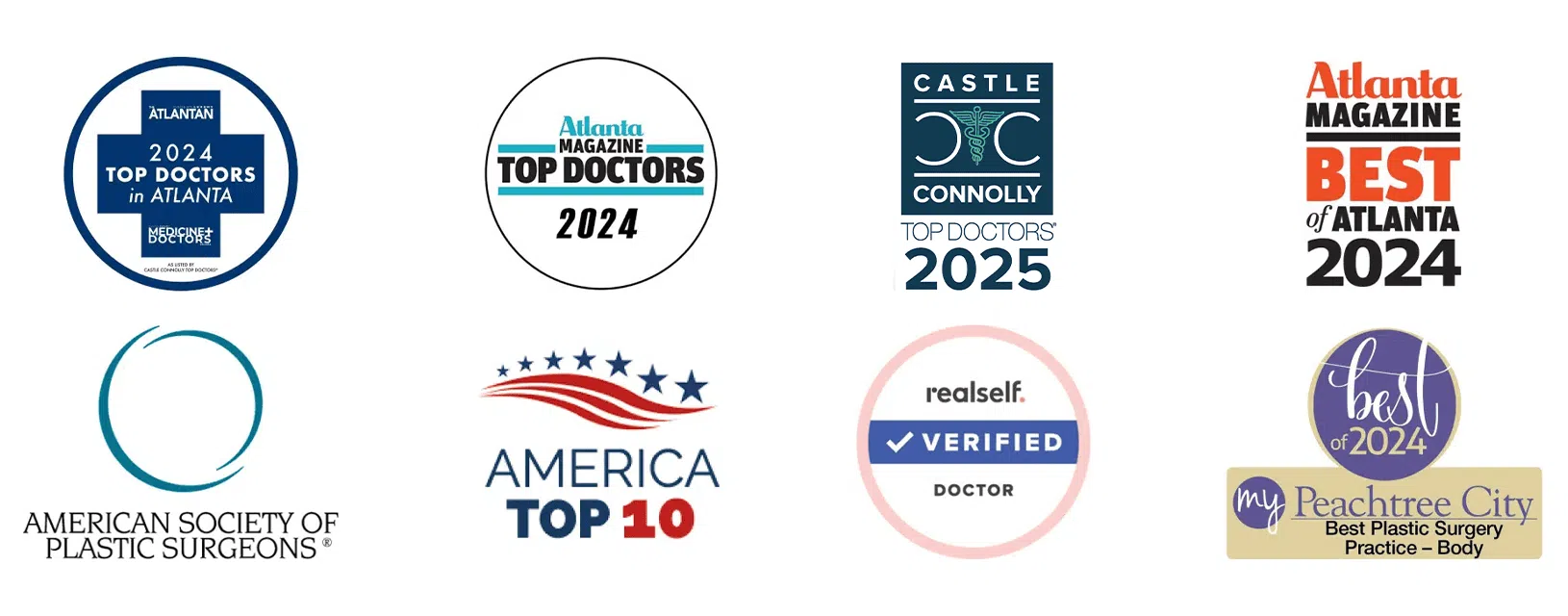
Nipples and areolas (the dark pigmented skin around the nipples) come in all different shapes and sizes. There isn’t a “perfect” size or shape for either. Still, every woman has her own sense of what looks best. Some may think their areolas are too wide, puffy, or stretched out, or some may want their areolas to be perfectly round. Others may feel self-conscious about their nipples because they are very long or protruding, droopy or inverted. Whatever the case may be, doing research and speaking with a doctor about nipple/areola reduction surgery may be a wise decision.
If the above describes your areolas or nipples, surgery to reduce the size or modify the shape could be an excellent choice for your needs. Surgery can help create more beautifully proportioned and aesthetically pleasing breasts, as well as give a patient more confidence and higher self-esteem.
What is Nipple/Areola Reduction Surgery?
Nipple reduction surgery is the removal of tissue from the nipples and the subsequent reshaping of the nipples and areolas. A nipple/areola reduction is typically done in conjunction with either a breast augmentation (implants) or a breast lift after a woman is finished nursing.
In a nipple reduction, usually, it is the length of the nipple that needs reducing; this makes it slightly flatter and less protuberant. However, some techniques include reducing the diameter of the nipple. These techniques can be performed in conjunction with one another or can be done independently.
What is the Process for Nipple Reduction Surgery?
During surgery, part of the tip of the nipple is removed, with the skin is sutured inward. If the nipple is inverted or inward-pointing, a small incision is made near the base of the nipple. To reverse the nipples, the fibers that are responsible for pulling the nipple inward are gently spread apart. Once the nipple is facing outward, the incision is stitched up.
An areola reduction is typically performed in conjunction with a breast augmentation or a breast lift or in combination with a nipple reduction. During an areola surgery, an incision is made around the perimeter of the areola. Excess tissue is removed, and then the incision is closed. An added benefit to the procedure is that it slightly lifts the breasts, giving the patient a mini-makeover.
What are the Results of Nipple Reduction Surgery?
 Breasts have a rounded, more “perky” look to them after surgery, and nipples/areolas will be smaller in appearance.
Breasts have a rounded, more “perky” look to them after surgery, and nipples/areolas will be smaller in appearance.
Areola reduction surgery may result in a circumferential scar around the areola; however, scars are always noticeable and do tend to fade with time. How your scar looks depends on many factors, including your scarring history, i.e., what other scars have looked like on your body in the past, and how much pressure is placed on the scar on a regular basis.
What is the Recovery Period Like?
Both nipple and areola surgeries are performed in the operating room under local or general anesthesia – i.e.; this is an outpatient procedure. In most cases, patients will be ready to go home shortly after the procedure is finished. These small incisions heal very quickly, and recovery time is minimal. Exactly how much time is needed to recover varies from patient to patient, but most women are able to resume their everyday lives and return back to work within a week. In the first few days after surgery, there may be some discomfort, but this can be easily mitigated through the use of pain relievers.
Loss of nipple sensitivity may be possible, though some patients report having a higher amount of sensitivity.
Who is a good candidate for this procedure? What qualifying factors do I need to have?
- If getting a nipple/areola reduction would make you feel happier and more confident and resolve any self-esteem issues regarding your breasts.
- You have realistic expectations of the outcome of your surgery. Make sure to do your research even before your initial consultation with your surgeon.
- You are done having children and breastfeeding and are not currently nursing. Nipple/areola reduction can have a significant impact on a woman’s ability to breastfeed, because of how the surgery changes the size and shape of your breasts. If you do plan on having more kids and on breastfeeding, consult your doctor before getting surgery.
- You are mentally and emotionally prepared for surgery.
- You are past puberty.
At Perimeter Plastic Surgery, we take the time to speak with each individual patient about their needs and desires prior to their nipple/areola reduction surgery so that we can help them determine their goals and best outcomes. We look forward to speaking with you about your nipple/areola reduction surgery, and how this procedure can improve the overall look and appearance of your breasts while providing you with a better quality of life.




